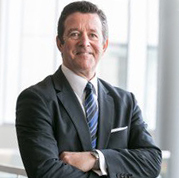About 15 years into his career, Shawn Jones, MD, experienced burnout, which triggered his journey to recover his heart. This was something he had neglected and nearly lost during his training as a medical student and resident into his early years as a surgeon.
He addressed his struggle with physician burnout by recognizing the beauty in art through some of the best paintings and artists of the Renaissance. His journey is chronicled in his book, “Finding Heart in Art.”
“Like opening a wound and allowing it to heal from the inside out, discovering my emotions through these paintings was painful, but it was also healing,” Dr. Jones, an AMA member, wrote in his book. “Medical training can desensitize one over time, dehumanizing you in a way that is similar to the effects of post-traumatic stress disorder.
“Surgeons in particular have a tendency to put emotions in a box and set them aside—something their medical training teaches very well,” he added.
It was his wife Evelyn Jones, MD, a dermatologist, who brought this to his attention. If she had not said anything, he may not have recognized that he was burned out until something happened.
“For me it was a very disorienting experience because I did not recognize how deeply I had sunk,” said Dr. Jones, a head and neck surgeon in Paducah, Kentucky. “It was really important for me to listen to the people around me to recognize I had a problem and to get some help.”
“That’s one reason why it’s really important to try to emphasize prevention and ongoing maintenance of self-care because it is so easy to just gradually start to overwork yourself,” he said. “I sort of intuitively knew something was wrong, but I thought the answer was working harder and more. I sort of hastened my own demise.”
To overcome physician burnout and find himself again, Dr. Jones turned to art to access his emotions by reconnecting with beauty.
Multiple factors at play
His experience of burnout was the “result of a very slow leak punctuated by multiple traumatic episodes,” wrote Dr. Jones. Instead of taking a step back, he continued to add more work, something he was trained to do.
“For me it was a combination of the perfectionist tendency that is fairly common in people who decide to go to medical school and then just becoming a surgeon, the long work hours and those things I saw,” he said.
As a surgeon, some days were worse than others. For example, he cared for victims of the Carrolton bus tragedy in which members of a church youth group were struck head on by a drunk driver traveling the wrong way on the interstate. These events still affect Dr. Jones even though the most recent event occurred nearly 20 years ago. He carries all his patients with him.
“I became very adapted to putting my own emotions aside and so then it got to the point when it came time to try to get out of that and to get better that I had a very difficult time accessing my emotions,” he said.
A journey to find heart
Dr. Jones’ interest in art began after visiting the National Gallery of Art in London. He was captivated with 16th and 17th century Renaissance Art.
“I was able to identify my feelings when I talked about what I saw in the painting,” he said. “That really gave me access in a way to a place that I had sort of shut off and kind of opened the floodgates.”
For example, the painting The Return of the Prodigal Son by Rembrandt Harmenszoon van Rijn, caught Dr. Jones’ attention because, “Coming full circle in a healing journey is about remembering how it felt at the beginning of the journey.”
“I can still be a doctor and have my heart, and in fact be a better doctor with my heart, but that requires that I, in a sense, fully live the paintings that I’ve discussed in this book: stand before the accuser, suffer well, accept my position and admit my helplessness, recognize my own mortality, be open to my wounds,” he wrote. “I must be willing to take time out of my day to be the Samaritan but not demand to be the hero.”
It doesn’t have to be art. It can be landscapes and other things that evoke emotion. For Dr. Jones, it was more about the stories told through art and how they touched him.
Committed to making physician burnout a thing of the past, the AMA has studied, and is currently addressing issues causing and fueling physician burnout—including time constraints, technology and regulations—to better understand and reduce the challenges physicians face. By focusing on factors causing burnout at the system-level, the AMA assesses an organization’s well-being and offers guidance and targeted solutions to support physician well-being and satisfaction.
The AMA Ed Hub™—your center for personalized learning from sources you trust—offers education and CME on a broad range of topics, including burnout, professional well-being and “Teaching Physicians Not to Be Afraid of Poetry” from JN Learning™. Meanwhile, as part of the AMA Ed Hub offerings, the AMA’s STEPS Forward™ open-access modules offers innovative strategies that allow physicians and their staff to thrive in the new health care environment. These courses can help you prevent physician burnout, create the organizational foundation for joy in medicine, create a strong team culture and improve practice efficiency.
Learn more about AMA’s transformative practice improvement efforts here.




